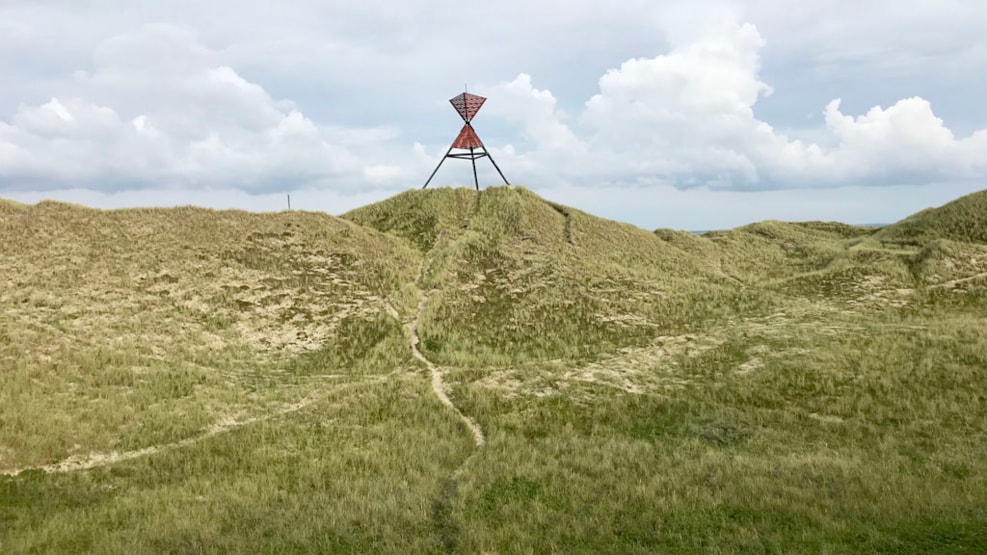
The seamark in Husby
The seamark at Husby Klit is a beautiful hill 7 kilometers north of Søndervig, which was erected in 1884 and protected in 1997.
Historic seamarks along the west coast of Jutland.
The beacons or beacons along Jutland's west coast are tall, sculptural, three-legged wooden structures that date from 1884-85 and are part of a combined system of beacons that the then Coast and Dune System erected to improve sea safety.
Of the original 23 beacons, the remaining 11 beacons were in Gl. Skagen, Løkken, Vigsø, Thorup, Stenbjerg, Vedersø Klit, Husby Klit, Årgab, Havrvig, Kærgård and Ringebjerge protected by the Danish Forest and Nature Agency in 1997.
The nautical marks are up to 12 meters high and the "heads" can be a circle, a triangle, a square or another easily recognizable figure, all of which were drawn as signatures on the charts, so that the navigators could determine the exact positions of the ships.
The beacons no longer have any maritime function, but together with the rescue stations are considered important cultural-historical and architectural features in the West Jutland coastal landscape.
The name "båke" is derived from the German "Baken" or "Bavn", which in the Middle Ages was the term for a stack of firewood, ignited as a signal fire in a high-lying place.
Husby Klit Båke
West Stadil Fjord, Houvig.
7 km north of Søndervig.
Pos. 56°10´40´´N 08°07´34´´E
Height 12 meters
Erected in 1884
Protected since 1997
Already four years after erecting this båke at Husby Klit, the Danish government decided that it was to be moved a little and rebuilt.